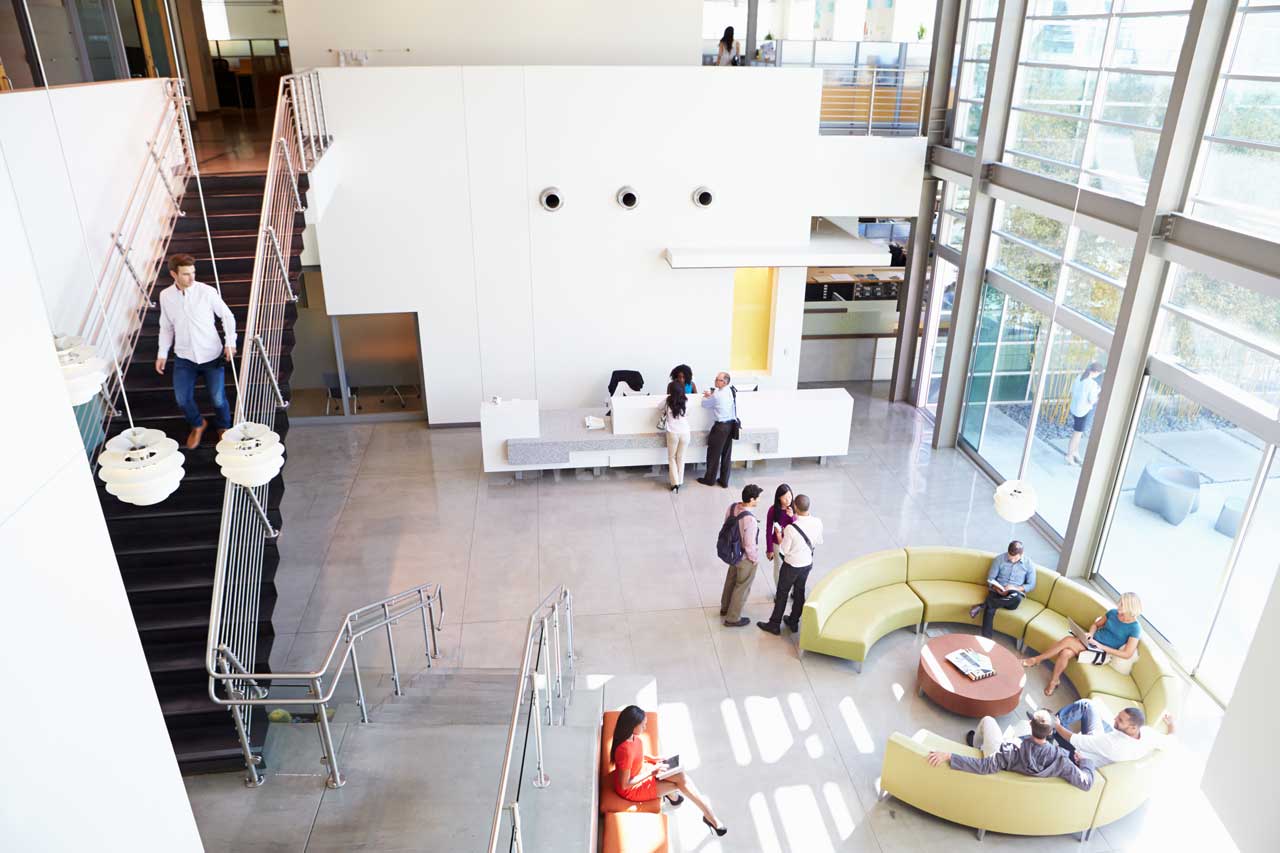
The workplace has undergone a seismic shift. For many organizations, hybrid work has emerged as the new norm, blending the flexibility of remote work with the collaborative benefits of in-office time. Yet, this transition hasn’t been without its challenges.
For office managers, facility planners, and business leaders, this style of work introduces a complex puzzle: how to create a hybrid office space that balances flexibility with efficiency, supports employee collaboration, and avoids wasting resources on underused spaces.
Many companies face a struggle like this — having a team embrace hybrid schedules, making the office feel overcrowded on Tuesdays and Wednesdays while sitting nearly empty on Mondays and Fridays.
Desks that once hosted full-time employees now remain unoccupied half the time, while meeting rooms are either double-booked or underutilized. Employees are frustrated by what they perceive as a lack of organization, while valuable resources go unused.
This is where tech like a visitor management system (VMS) can be transformative. Beyond simply tracking check ins, a customizable VMS provides the insights and tools needed to understand how your hybrid office space is used, identify inefficiencies, and design a workspace that works for all parties involved.
In this article, we’ll explore how office space utilization can address hybrid workspace challenges — and how smart tools like a VMS can make the process smoother, more accurate, and ultimately more impactful to hitting overarching business goals.
What is office space utilization?
At its core, office space utilization measures how effectively your physical workspace is being used. It’s not just about how many people are in the office but also how and where they work within that space — and whether it’s worth the investment.
There are two primary components to office space utilization:
- Office space usage: How much time employees spend in the office
- Office space occupancy: How many people occupy specific areas (e.g. desks, meeting rooms) at a given time
For instance, a workstation occupied for eight hours a day contributes to high occupancy, but if that space doesn’t meet the employee’s needs — whether due to lack of privacy, poor lighting, or anything else that impacts their satisfaction and productivity — it may still fail to deliver value.
Understanding office space utilization metrics allows you to tailor your office layout to meet employee demands and organizational goals.
Why office space utilization matters more than ever
The rise of hybrid work has reshaped how we view office space. Pre-pandemic offices were designed to accommodate employees five days a week. Today, many employees split their time between home and the office, leaving desks and meeting rooms underutilized on certain days.
Here’s why analyzing hybrid office space utilization is essential:
- Sustainability: Eliminating excess space reduces energy consumption and waste
- Cost savings: Reducing unused space can significantly lower real estate expenses
- Employee satisfaction: A well-designed office supports collaboration, creativity, and comfort
- Data-driven decisions: Understanding how spaces are used ensures every change aligns with actual needs
New challenges brought about by the hybrid workplace
We are now seeing new challenges emerging that never occurred in the pre-pandemic world.
Take a look at this example: A mid-sized tech company notices its employees are frustrated with their hybrid office setup. Desks near windows are always in high demand, while several meeting rooms remain empty most of the week.
By conducting a hybrid office space utilization analysis, the company discovers that:
- Desks with dual monitors are booked twice as often as those with single screens
- Small meeting rooms are fully booked, but large boardrooms are used only 30% of the time
- Employees from the same teams tend to cluster in specific areas, leaving other zones underutilized
Armed with these insights, the company reorganizes its layout, reallocates resources, and introduces hot-desking and easy-to-use booking tools. The result? Happier employees and a more efficient use of space.
How to assess whether you have an under-utilized hybrid workspace
Every successful office space utilization analysis starts with the right questions:
- What are the most popular workstations, and why?
- Which meeting rooms see the most use? Are they too big or too small for typical meetings?
- Are there “ghost meetings” where booked spaces go unused?
- Do some spaces remain empty most of the time? Why?
- How does office attendance vary by day or team?
After answering these starter questions, decide which hybrid office space utilization metrics could provide helpful information, and start calculating.
How to optimize desk utilization for the hybrid work era
Rethink desk utilization
In a hybrid workplace, assigning one desk per employee is often not only unnecessary but also wasteful. Most organizations find that flexible seating arrangements, such as hotel desking, significantly increase efficiency.
To determine the right number of desks, calculate your desk ratio:
- Multiply the average number of in-office days per week by the total number of employees
- Divide the result by the total workweek
- Add a 20-30% buffer to ensure availability
For example, if 100 employees work in the office three days a week, the minimum desk requirement can be 60. With the buffer, the company might aim for around 78 desks.
Sign In Solutions can help you track desk usage and discover booking trends to ensure your layout matches employee needs.
Enhance meeting room utilization
Meeting rooms often become a pain point in hybrid offices. Large boardrooms go unused for small gatherings, while smaller spaces are overbooked.
Here are some solutions to consider:
- Room-specific analysis: Use data to identify underused spaces and repurpose them
- Flexible configurations: Modular furniture allows rooms to adapt to different meeting sizes
- Booking confirmation features: Tools like Sign In Solutions can help release unconfirmed bookings, freeing up valuable meeting spaces
Boost open space performance
Open spaces, such as lounges or collaborative zones, can add value when designed thoughtfully. However, if they’re empty most of the time, they become liabilities.
Gather data on how employees use these areas. Are they avoiding them due to noise levels, lack of privacy, or inadequate equipment? Small changes, such as adding soundproof pods or comfortable seating, can make a big difference to your hybrid office space.
Address ghost meetings
Ghost meetings — booked but unused rooms — waste valuable resources. In hybrid office spaces, these often occur when remote attendees cancel at the last minute.
Automated systems that send reminders or require confirmation can reduce these occurrences. Smart VMS workplace features can eliminate or reduce the number of ghost meetings, ensuring space is always available for those who need it.
The role of technology in space optimization
The days of manual processes are long gone. Today, technology enables real-time insights and tools to optimize the way your hybrid teams use office space.
Tools like visitor management systems offer analytics dashboards that help you pinpoint and track:
- Occupancy rates for desks, rooms, and open spaces
- Usage patterns by team, department, or time of day
- Trends in employee preferences, such as equipment or location
A VMS can also help you simplify the process of reserving desks or rooms, providing both efficiency and ease of use.
The other thing you can try is installing occupancy sensors. These devices provide precise data on how spaces are used, helping you identify bottlenecks and opportunities for improvement.
Planning for the future of the hybrid office space
Don’t approach office space optimization just to cut costs. Use the opportunity to create an environment where employees produce their best work.
By analyzing utilization, implementing smart tools, and making data-driven decisions, your organization can adapt to the hybrid workplace’s unique demands and challenges.
Imagine a workplace where every square foot serves a purpose — where collaboration flourishes, costs are controlled, and employees look forward to coming into the office. That’s the power of office space utilization analysis done right.
Discover how Sign In Solutions can help you optimize hybrid workspaces for efficiency, flexibility, and employee satisfaction today. Let’s talk solutions.
